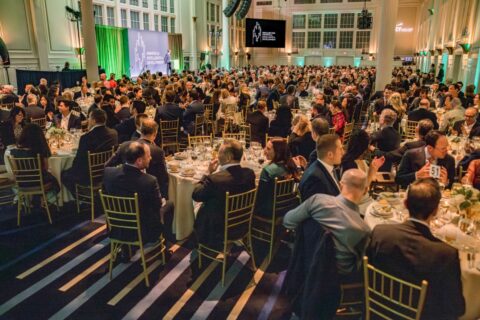
NEXT explores smart design and energy decisions at SL Green’s One Vanderbilt
On February 8, NEXT members gathered at the stately One Vanderbilt, catty-corner from Grand Central Terminal. Over a two-hour tour they learned about architect KPF’s granular decisions that resulted in a welcoming, light-filled LEED Platinum building referencing Grand Central’s grand design. The process, in partnership with Hines and SL Green, kicked off with 10 years of land acquisitions adding up to an entire city block. Subsequent actions included thoughtful materials selection such as lightly colored terra cotta tiles, road de-mapping, and setbacks to ease the flow and sense of space for pedestrians coming to and from the station, and smart energy choices to reduce energy use, including a chiller and CoGen plant. As for One Vanderbilt’s design, its massing comprises four interlocking and tapering volumes that spiral toward the sky, an elegant shape in sympathetic proportion to the nearby Chrysler Building. At the base, a series of angled cuts organizes a visual procession to Grand Central, revealing the Vanderbilt corner of the terminal’s magnificent cornice: a view that has been obstructed for nearly a century. Other standout features include a third-floor public outdoor terrace facing Grand Central, a light-filled entrance, and a new 14,000-square-foot pedestrian plaza on Vanderbilt Avenue. Also noteworthy, both as a way to ease congestion along the busy 42nd Street corridor, to please neighbors including the local community board, and as an enduring contribution to the neighborhood: a new Long Island Railroad entry point, which many commuters from points east welcomed.

















